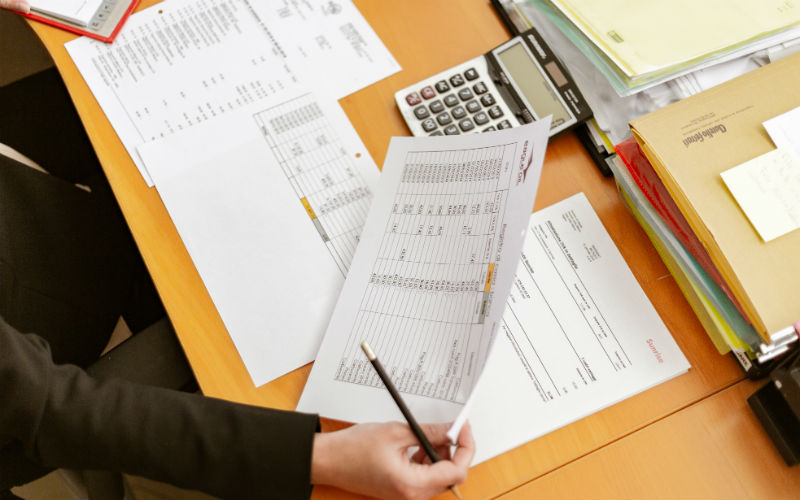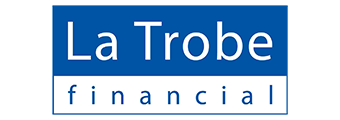As we all know, if your SMSF isn’t compliant with superannuation rules, you can get into serious trouble with the Tax Office, so getting your SMSF audited is essential.
So, what does an SMSF audit involve and how does it all work? Let's find out.
What is an SMSF audit?
Every financial year, your SMSF must undergo a financial and compliance audit to ensure it remains in accordance with the Australian Taxation Office (ATO). An audit has to be completed before you can lodge your SMSF’s annual tax return.
As we’ve mentioned, there are two parts to an SMSF audit: a financial audit and a compliance audit. The financial audit component looks at the fund’s financial statements in accordance with Australian Auditing Standards (ASAs).
The compliance audit component basically checks that your SMSF fund is compliant with all superannuation legislation according to the Standards on Assurance Engagements (ASAE) produced by the Auditing and Assurance Standards Board (AUASB). That’s a lot of acronyms but stay with me.
An SMSF audit has to be undertaken by a registered and approved SMSF auditor appointed by the trustee(s). The auditor also has to be audited by the ATO (so much auditing). You can’t audit your own SMSF fund or that of an immediate family member.
Now, take a shot for every time I use the word audit in this article.
How much does an SMSF audit cost?
Not many things in life are free and neither are SMSF audits. Because many SMSF auditors are private professionals, they can pretty much set their own rates meaning there isn’t a universal SMSF audit fee.
According to the ATO, these are the average and median SMSF audit fees up to the financial year 2020/21 and SMSF audit fee price ranges. As you can see, the median SMSF audit fee is $550 with the lion’s share of SMSF audit fees falling between $500-$999.
Average and median SMSF auditor fees, 2016–17 to 2020–21
|
SMSF auditor fees |
2020-21 |
2019–20 |
2018–19 |
2017–18 |
2016–17 |
|---|---|---|---|---|---|
|
Average |
$640 |
$672 |
$686 |
$684 |
$689 |
|
Median |
$550 |
$550 |
$550 |
$550 |
$550 |
Source: ATO
Distribution of SMSFs by audit fee range, 2016-17 to 2020–21
|
Audit fee range |
2020-21 |
2019–20 |
2018–19 |
2017–18 |
2016–17 |
|---|---|---|---|---|---|
|
>$0–$499 |
41.4% |
38.3% |
37.9% |
38.4% |
37.6% |
|
$500–$999 |
48.4% |
50.0% |
49.5% |
49.6% |
49.9% |
|
$1,000–$1,999 |
8.8% |
9.8% |
10.4% |
9.9% |
10.3% |
|
$2,000 and above |
1.4% |
1.9% |
2.2% |
2.2% |
2.3% |
|
Total |
100% |
100% |
100% |
100% |
100% |
Source: ATO
If you’re trying to cut costs and save money by getting a cheap SMSF audit, tread carefully. Some years ago, the ATO conducted an investigation into ‘lower-cost audits’ (defined as those that charged below $400 at the time) and found several issues with them failing to meet basic standards. The ATO conducts regular audits of SMSF auditors (that’s two shots) to ensure its requirements are being met.
In 2021, the ATO further tightened its regulations, preventing SMSFs from using the in-house auditing services of their own accountants. The ATO’s auditor independence requirements all but rule out in-house audits where businesses are also providing accounting, bookkeeping, or management services to the SMSF.
Industry watchdog, the Australian Secturities & Investment Commission (ASIC) administers a register of SMSF auditors, requiring them to pass a competency exam, have required levels of practical experience, and a minimum standard of educational qualifications. The ATO regularly refers auditors not meeting their requirements to ASIC for further investigation and/or prosecution, which can result in SMSF auditors being struck off the ASIC register. Tightening regulations on auditors in recent years have resulted in some choosing to leave the sector (as well as many losing their registrations). With the number of SMSFs rising in Australia, auditors warn auditing costs will likely rise as a result.
Auditing an SMSF that is winding up
If you’re winding up an SMSF (closing it down), the trustee has to appoint an SMSF auditor to do the final audit and check that the SMSF fund is compliant with wind-up requirements.
The auditor has many responsibilities to comply with when doing this, which are listed in great detail on the ATO’s website if you want a bit of light reading.
SMSF audit checklist
So, if you’ve made it this far, congrats. Have a doughnut. Now, if you’re about to get your SMSF audited, there is quite a long list of documents you may need.
Documents required for an SMSF audit:
-
The auditor requires source documents to verify transactions of the fund for the financial year. This will include bank statements, rental statements, contract notes, and financial statements involving any investments, loans, contributions, distributions, or expenses.
-
Some accounting software can accept electronic data from banks, brokers, and managed fund platforms, negating the need to provide physical paper statements and documents. However, don’t assume this – check whether the accountant you work with has the applicable software, whether there are data feeds in place, and if the SMSF auditor will accept this.
If it is the first year an auditor is auditing the fund, they will require signed copies of the documents that established the super fund. For example:
-
Signed Trust Deed
-
Signed ATO Trustee Declarations
-
Signed Investment Strategy
-
Signed Meeting Minutes, including resolutions and acceptance of appointment as trustee of the fund
-
Signed Consent to act as a Trustee and Member applications
If SMSF trustees fail to keep accurate documentation and records, the auditor must report it to the Tax Office.
Some of the more common issues that constitute a breach or will see a SMSF auditor issue a formal caution include:
-
Not keeping sufficient documentation to substantiate activities and transactions of a super fund. You can’t just provide an excel spreadsheet of items to the auditor that you wish to claim. You need to have original bank statements, invoices for expenses, etc.
-
Not holding onto the documents that established the super fund. These can include the signed trust deed, ATO Trustee Declarations, and minutes from the establishment meeting. These need to be maintained by the trustee and produced when required.
-
Not having a current investment strategy. This needs to be a formal document that is reviewed and regularly updated.
-
Not keeping the assets of the fund in the name of the super fund. A SMSF’s assets need to be entirely separate from the trustees' personal assets.
What happens if I don’t complete an SMSF audit?
You can’t lodge your tax return for an SMSF until it has been audited, so a penalty enforced by the ATO for SMSF non-compliance would apply. There is a long list of SMSF non-compliance penalties starting with enforceable undertakings and rectification directions. These basically inform SMSF trustees of their funds' non-compliance and requires them to rectify the issues within a certain timeframe.
The ATO may also choose to impose ‘administrative penalties’ – or monetary fines – to be paid from a trustee’s personal funds, not from the SMSF. More serious, or repeated, non-compliance can lead to the freezing of a fund's assets, disqualification of its trustees, or the forcible winding up of the fund. The most serious cases may also result in civil or criminal court proceedings.
The ATO is very clear on how it deals with non-compliance. In assessing what penalties to apply, the ATO will generally consider the trustee’s compliance history, the extent of the non-compliance, and whether the non-compliance can be satisfactorily rectified within a suitable timeframe. It’s best not to fall foul of the authorities in the first place as any previous non-compliance may lead to more serious consequences down the track.
Savings.com.au’s two cents
As you can see, SMSF audits are a very bland but very important topic and if you’re thinking about running an SMSF (or you currently are), it’s essential to understand what your responsibilities and obligations are. If the task seems too challenging or time-consuming, you can investigate whether it may be better handing over administration of your fund to a specialist SMSF administrator. This can still allow you to maintain more control over your superannuation than joining an APRA super fund. Of course, you could also decide to roll over your SMSF into an industry fund. There is no right or wrong option when it comes to superannuation – it entirely depends on what best suits your own goals and circumstances.
And if you just can’t get enough of reading about SMSFs, we’ve got a lot more where that came from.
Looking to take control of your retirement? This table below features SMSF loans with some of the most competitive interest rates on the market.
| Lender | Home Loan | Interest Rate | Comparison Rate* | Monthly Repayment | Repayment type | Rate Type | Offset | Redraw | Ongoing Fees | Upfront Fees | Max LVR | Lump Sum Repayment | Extra Repayments | Split Loan Option | Tags | Features | Link | Compare | Promoted Product | Disclosure |
|---|---|---|---|---|---|---|---|---|---|---|---|---|---|---|---|---|---|---|---|---|
6.49% p.a. | 6.51% p.a. | $3,157 | Principal & Interest | Variable | $null | $230 | 70% |
| Promoted | Disclosure | ||||||||||
6.74% p.a. | 6.79% p.a. | $3,240 | Principal & Interest | Variable | $0 | $220 | 70% | Disclosure | ||||||||||||
6.75% p.a. | 7.16% p.a. | $3,243 | Principal & Interest | Variable | $30 | $null | 80% | |||||||||||||
6.59% p.a. | – | $3,190 | Principal & Interest | Variable | $0 | $995 | 80% | |||||||||||||
6.99% p.a. | 7.01% p.a. | $3,323 | Principal & Interest | Variable | $0 | $230 | 80% |
| Promoted | Disclosure |
First published on October 2020
Image by Oleg Magni from Pexels
Article update on 21 March 2024 by Denise Raward





